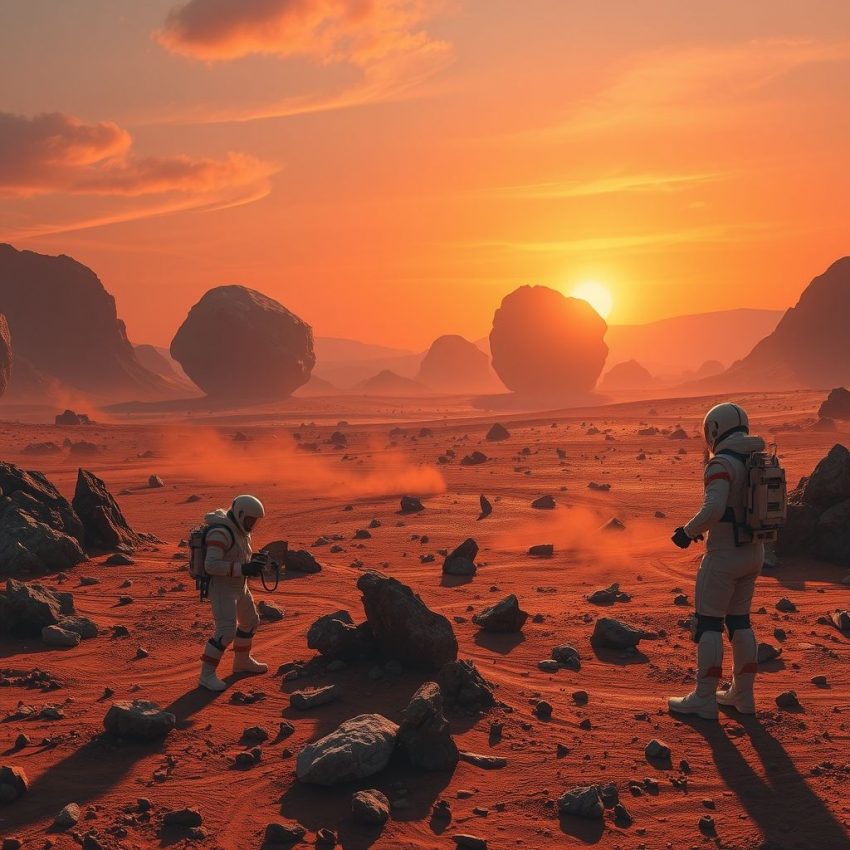Slamming Asteroids into Mars: A Wild Plan for a Red Planet Makeover
Could we really terraform Mars? Turn it from a cold, desolate desert into a second Earth? The idea has captured the imagination of scientists and sci-fi fans for decades. And while many proposals focus on slower, more conventional methods, one idea stands out for its sheer audacity: slamming asteroids into Mars.
This "wild plan," while seemingly ripped from the pages of a science fiction novel, has a basis in scientific theory. The idea is to carefully redirect asteroids containing volatile compounds, like water ice and ammonia, and crash them into the Martian surface. The impact would release these trapped volatiles, thickening the atmosphere and potentially jumpstarting a greenhouse effect, warming the planet and making it more habitable.
The Logic Behind the Madness:
Mars currently possesses a thin atmosphere, primarily composed of carbon dioxide. This thin atmosphere offers little protection from harmful radiation and doesn't trap enough heat to support liquid water on the surface. By impacting ice-rich asteroids, we could achieve a few critical things:
- Increase atmospheric density: The impact would release water vapor and other gases, thickening the atmosphere and increasing atmospheric pressure.
- Introduce water: Essential for life as we know it, water ice locked within asteroids could create lakes, rivers, and even oceans on Mars.
- Trigger a greenhouse effect: A thicker atmosphere, particularly with the presence of water vapor, would trap more solar radiation, leading to a rise in surface temperature.
- Deliver other essential elements: Asteroids can contain other vital elements like nitrogen, which is necessary for plant growth and a key component of a breathable atmosphere.
The Challenges Are, Admittedly, Astronomical:
While the concept is exciting, the practical challenges are immense:
- Precision Targeting: Redirecting asteroids with enough accuracy to hit Mars is a feat of engineering we haven't yet mastered. Slight miscalculations could lead to catastrophic consequences.
- Impact Energy: The impacts would be incredibly powerful, potentially causing widespread planetary disruption. Controlling the energy release and minimizing damage would be critical.
- Unforeseen Consequences: We don't fully understand the Martian geology and climate. The impacts could trigger unintended and potentially harmful consequences, such as releasing toxic gases or triggering massive dust storms.
- Ethical Considerations: Terraforming another planet raises complex ethical questions about planetary protection and the potential impact on any existing Martian life, however microbial it may be.
Is it Feasible?
Currently, the technology required for asteroid redirection and impact control is still in its infancy. However, ongoing research in asteroid mining and planetary defense could pave the way for this audacious plan. While terraforming Mars by slamming asteroids into it remains a distant prospect, it's a fascinating concept that pushes the boundaries of what we might be able to achieve in the future.
The Conversation Continues:
What do you think? Is this "wild plan" a viable path to a habitable Mars, or is it simply science fiction? Share your thoughts in the comments below!
Don’t miss out on this exclusive deal, specially curated for our readers! Cordless Vacuum Cleaner, 40Kpa 45Mins Vacuum Cleaners for Home, 8-in-1 Lightweight Stick Vacuum with Powerful Suction
This page includes affiliate links. If you make a qualifying purchase through these links, I may earn a commission at no extra cost to you. For more details, please refer to the disclaimer page. disclaimer page.

